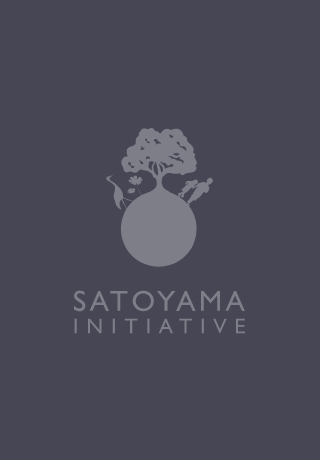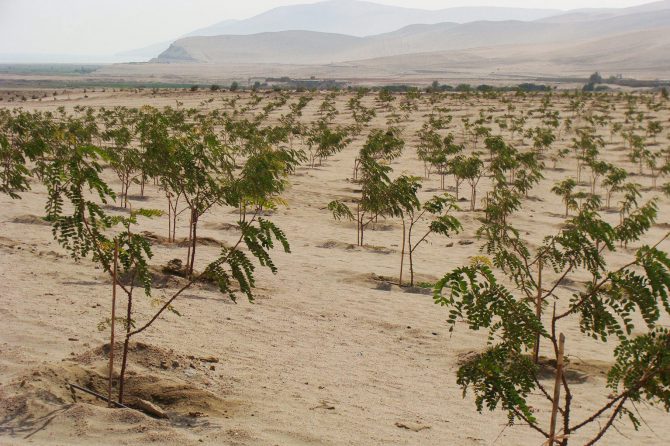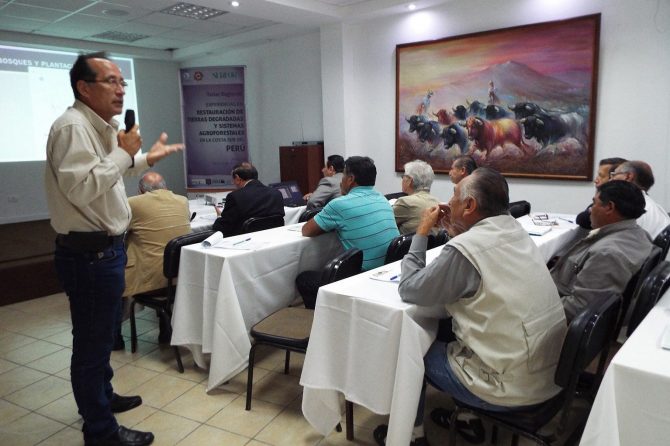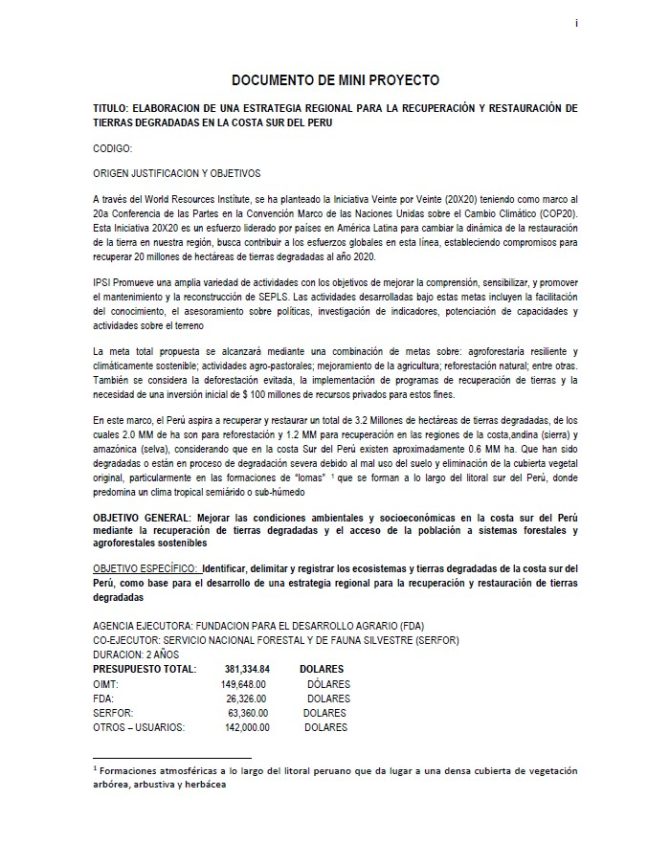2015 PERU
Towards a Strategy for Mitigation of Climate Change Effects in the Coastal Region of Peru, in the Context of the El Niño Event
Asociacion Pro Desarrollo Agroindustrial de Camana (APAIC)
Partnership building
Landscape
Overview
Three million hectares of the coastal region of Peru region are under an arid climate, frequently influenced by the “El Niño” phenomenon and considered as barren or severely degraded land. The project aimed to test and build the resilience of this arid landscape by promoting potential forestry and agro-forestry activities and to formulate a national plan and strategy for arid area restoration, and establishing a collaborative institutional setting for their implementation in a participatory and inter-sectoral way.
Key achievements
- Diverse cata collection and research activities were conducted together with the ITTO´s financed project (PD 724/13 Rev. 1 ( F) for the elaboration of the guidelines for the restoration of degraded land using afforestation practices with tara
- Three workshops were successfully organised to build and promote awareness on the concept and expected impacts of climate change and to develop a strategy for mitigating these impacts.
- The project established a technical committee, which developed a roadmap for the recovery and restoration of 100,000 hectares of degraded land.
- More than 40 small farmers initiated small plantations of tara (Caesalpinea spinosa), and other forest species taking part in an experimental trial for testing the potential capacity of production of these species in extremely bad soil conditions (salinity and water irrigation scarcity).
Lessons
- Barren or degraded lands are generally considered wastelands in Peru and other countries. However, this concept is a distortion of the reality, considering the real capacity or potential use of these areas. Sometimes it needs only a little push to start their restoration, as there is potential to build their resilience.
- Climate change is a permanent and possibly accelerating process, which needs to be taken into account in land use planning and for human activities, particularly in the coastal region, where the impacts are more severe.
- The introduction of forest and agroforestry practices among traditional farmers dealing with customary agricultural monocultures is very challenging and difficult. However, when these activities do not directly compete or conflict with the traditional ones, people are much more ready to participate.
Project location
Organisation

Asociacion Pro Desarrollo Agroindustrial de Camana (APAIC)
- Sector
- Non-governmental organisation
- Country
- Peru
Related products
Report: ELABORACION DE UNA ESTRATEGIA REGIONAL PARA LA RECUPERACIÓN Y RESTAURACIÓN DE TIERRAS DEGRADADAS EN LA COSTA SUR DEL PERU
- Publisher
- Asociacion Pro Desarrollo Agroindustrial de Camana (APAIC)
Mini report of the SDM project in Spanish : Towards a Strategy for Mitigation of Climate Change Effects in the Coastal Region of Peru, in the Context of the El Niño Event.
Relevant projects
Projects of the same year
Aichi Biodiversity Targets
Aichi Biodiversity Targets
-
Awareness increased
-
Sustainable production and consumption
-
Habitat loss halved or reduced
-
Sustainable management of marine living resources
-
Sustainable agriculture, aquaculture and forestry
-
Ecosystems and essential services safeguarded
-
Ecosystems restored and resilience enhanced
Sustainable Development Goals
Sustainable Development Goals
-
Zero hunger
-
Life on land


